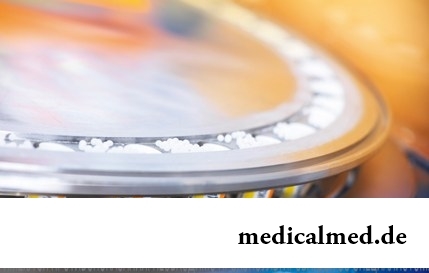





Klatsid
Application instruction:
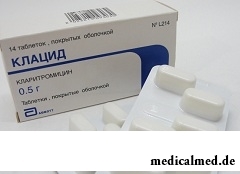 Klatsid – an antibiotic of group of macroleads.
Klatsid – an antibiotic of group of macroleads.
Form of release and structure
Dosage forms:
- Tablets, film coated: an oval biconvex form, yellow or light yellow color (on 250 mg on 7, 10 or 14 pieces in blisters, in a cardboard pack 1, 2 or 3 blisters; on 500 mg on 7 pieces in blisters, in a cardboard pack 2 blisters);
- Powder for preparation of suspension for intake: the granulated mass of white or almost white color with fruit aroma; when mixing with water opaque suspension with fruit aroma of white or almost white color is formed (on 42,3 g or 70,7 g in plastic bottles of 60 ml or 100 ml, in a cardboard pack 1 bottle complete with the dosing syringe or a dosing spoon);
- Lyophilisate for preparation of solution for infusions: from white till almost white color, has weak aroma (on 500 mg in glass colourless bottles, in a cardboard pack 1 bottle).
Active agent – кларитромицин:
- 1 tablet – 250 or 500 mg;
- 5 ml of ready suspension – 125 or 250 mg;
- 1 bottle of lyophilisate – 500 mg.
Auxiliary components:
- Tablets: cellulose microcrystallic, kroskarmelloza, magnesium stearate, silicon dioxide, stearic acid, povidone, talc; besides, in tablets on 250 mg – starch prezhelatinizirovanny, quinolinic yellow (E104);
- Powder: carbomer (карбопол 974P), gipromelloza phthalate, K90 povidone, castor oil, maltodextrin, silicon dioxide, sucrose, gum xanthane, titanium dioxide, fragrance fruit, citric acid anhydrous, potassium sorbate;
- Lyophilisate: lactobionew acid, sodium hydroxide of 4%.
In addition as a part of a film cover of tablets: gipromelloza, hydroxypropyl cellulose, propylene glycol, sorbitan monooleate, titanium dioxide, sorbic acid, vanillin, quinolinic yellow (E104).
Indications to use
Klatsid's use is shown at treatment of the infectious and inflammatory diseases caused by microorganisms, sensitive to a klaritromitsin:
- Pneumonia, bronchitis and other infectious pathologies of lower parts of respiratory system;
- Pharyngitis, sinusitis and other infectious diseases of upper parts of respiratory system;
- Ugly face, inflammation of hypodermic cellulose, folliculitis and other infections of soft tissues and skin;
- The Mikobakterialny localized or disseminated infections caused by Mycobacterium intracellulare and Mycobacterium avium;
- The localized infections caused by Mycobacterium fortuitum, Mycobacterium chelonae and Mycobacterium kansasii.
Besides, tablets are appointed: for an eradikation of Helicobacter pylori and decrease in frequency of a recurrence of an ulcer of a duodenum; To HIV-positive patients with the maintenance of lymphocytes of CD4 (T-helper lymphocytes) of no more than 100 in 1 mm3 for prevention of spread of the infections caused by the Mycobacterium avium (MAC) complex; at therapy of dontogenous infections (only tablets on 250 mg).
Powder is applied also at treatment of acute average otitis.
Contraindications
Contraindications to use of all dosage forms of Klatsid:
- Simultaneous use with tsizapridy, Pimozidum, astemizoly, terfenadiny; ergotamine, dihydroergotamine and other alkaloids of an ergot; midazolam for intake; colchicine;
- Hypopotassemia (risk of lengthening of an interval of QT);
- Heavy liver failure against the background of a renal failure;
- The instruction in the anamnesis on ventricular arrhythmia or ventricular tachycardia like "pirouette", lengthening of an interval of QT;
- Combination to inhibitors of GMG-KOA-reduktazy (statines) which are generally metabolized by CYP3A4 isoenzyme (симвастатин, ловастатин), in connection with high risk of development of a myopathy and rabdomioliz;
- The cholestatic hepatitis or jaundice in the anamnesis which developed against the background of use of a klaritromitsin;
- Breastfeeding period;
- Hypersensitivity to components of drug and other macroleads.
With care Klatsid is recommended to appoint: at a renal and/or liver failure of heavy and average degree, coronary heart disease, the heavy heart failure expressed to bradycardia (it is less than 50 beats per minute), a hypomagnesiemia; during pregnancy; along with reception: benzodiazepines (to triazoles, alprazola, midazolam for intravenous use), drugs which are metabolized by CYP3A isoenzyme (including цилостазол, carbamazepine, cyclosporine, Methylprednisolonum, Disopyramidum, indirect anticoagulants (warfarin), омепразол, quinidine, vinblastine, sildenafit, рифабутин, такролимус), the medicines inducing the CYP3A4 isoenzyme (which such as rifampicin, carbamazepine, Phenytoinum, a St. John's Wort is made a hole phenobarbital), blockers of slow calcium channels, metabolized CYP3A4 isoenzyme (including амлодипин, verapamil, diltiazem), antiarrhytmic means of the III class (Amiodaronum, дофетилид, соталол) and an IA class (procaineamide, quinidine).
Besides, tablets or lyophilisate of a klaritromitsin cannot be accepted along with ranolaziny or ticagrelor.
Purpose of drug in the form of tablets and powder is contraindicated to patients with a porphyria.
With care it is necessary to appoint tablets and lyophilisate at simultaneous use with other ototoksichny means, especially aminoglycosides; fluvastatiny and other statines which do not depend on metabolism of an isoenzyme of CYP3A.
Patients cannot accept powder with a syndrome of glyukozo-galaktozny malabsorption, inborn intolerance of fructose, insufficiency of invertase-isomaltase.
Patients with a diabetes mellitus, myasthenia гравис take powder with caution.
Age restrictions to Klatsid's use:
- Tablets: up to 12 years;
- Lyophilisate: up to 18 years.
Route of administration and dosage
- Tablets: accept inside to or after food. The dose and the period of treatment are appointed by the doctor on the basis of clinical indications. A usual dose of drug for children over 12 years and adult – 250 mg 2 times a day. The recommended dosing for adults at treatment of mikobakterialny infections (except tuberculosis), the peptic ulcer caused by Helicobacter pylori infection for prevention of the infections caused by MAC – 500 mg 2 times a day. Treatment duration – 5-14 days. At patients AIDS treatment of the disseminated MAC of infections is recommended to be continued till the moment while there is a microbiological and clinical effect. Use of drug is recommended to be combined: at therapy of mikobakterialny infections – with other antibacterial agents, active to these activators; for Helicobacter pylori eradikation – with germicides and inhibitors of the proton pump. A dose for treatment of dontogenous infections – 250 mg 2 times a day, the reception period – 5 days. Patients with a renal failure are recommended to accept a half of a usual dose: 250 mg of 1 times a day, at heavy infections – on 250 mg 2 times a day no more than 14 days;
- Powder: for preparation of suspension part with water, gradually adding it to a bottle to a tag, then stir up before receiving solution with homogeneous structure. Suspension is accepted inside to or after food, it is possible to dilute with milk. The recommended daily dosing for children: at nemikobakterialny infections – at the rate of 7,5 mg on 1 kg of weight of the child (but no more than 500 mg) 2 times a day within 5-10 days; at the disseminated or local mikobakterialny infections – 7,5-15 mg on 1 kg of weight 2 times a day, treatment lasts before the moment of lack of clinical effect. For therapy of mikobakterialny infections powder appoint in combination with other antimicrobic means, active to these activators. At a renal failure usual doses reduce twice, and prolong the period of use up to 14 days. Before reception contents of a bottle need to be shaken up well;
- Lyophilisate: it is intended only for intravenous (in/in) infusions. The recommended dosing for adults – 1 g a day. The daily dose is divided into 2 infusions, duration of everyone – not quicker than 60 minutes. In/in administration of drug at a severe form of a disease – 2-5 days with further appointment, if necessary, administration of drug inside. For patients with a renal failure the dose is reduced twice.
Side effects
- From an organism in general: infrequently – an adynamy, a hyperthermia, a fever, an indisposition, fatigue, thorax pain;
- From the alimentary system: often – nausea, vomiting, pain in a stomach, dyspepsia, diarrhea or a lock; infrequently – a gastroesophageal reflux disease, an esophagitis, gastritis, stomatitis, a proctalgia, a glossitis, dryness in a mouth, abdominal distention, an eructation, a cholestasia, a meteorism, hepatitis (including hepatocellular, cholestatic); frequency is unknown – cholestatic jaundice, discoloration of teeth and language, acute pancreatitis, a liver failure;
- From a metabolism and food: infrequently – a loss of appetite, anorexia;
- From a nervous system: often – sleeplessness, a headache; infrequently – drowsiness, dyskinesia, a loss of consciousness, dizziness, a tremor, a hyperexcitability, concern; frequency is unknown – psychotic frustration, spasms, confusion of consciousness, a depression, depersonalization, a disorientation, dreadful dreams, hallucinations, a mania, paresthesia;
- From cardiovascular system: often – a vazodilatation; infrequently – fibrillation of auricles, a cardiac standstill, premature ventricular contraction, lengthening of an interval of QT on the electrocardiogram (ECG), an atrial flutter; frequency is unknown – ventricular tachycardia (including the pirouette type);
- From respiratory system: infrequently – nasal bleeding, asthma, a thromboembolism of a pulmonary artery;
- From sense bodys: often – a food faddism, a dysgeusia; infrequently – a hearing disorder, вертиго, a ring in ears; frequency is unknown – an ageusia, deafness, an anosmia, a parosmiya;
- From an urinary system: frequency is unknown – intersticial nephrite, a renal failure;
- From a musculoskeletal system: infrequently – musculoskeletal constraint, a muscular spasm, a mialgiya; frequency is unknown – a myopathy, рабдомиолиз;
- From integuments: often – strong sweating; frequency is unknown – hemorrhages, an acne;
- Parasitic and infectious diseases: infrequently – candidiasis, consecutive infections (including vaginal), cellulitis, a gastroenteritis; frequency is unknown – an ugly face, pseudomembranous colitis;
- Allergic reactions: often – rash; infrequently – hypersensitivity, anaphylactoid reactions, an itch, dermatitis violent, makulopapulezny rash, a small tortoiseshell; frequency is unknown – a Quincke's disease, a Lyell's disease, anaphylactic reaction, medicinal rash, Stephens-Johnson's syndrome;
- From laboratory indicators: often – a deviation in hepatic test; infrequently – a leukopenia, change of the relation albumine-globulin, a neutropenia, a trombotsitemiya, an eosinophilia, increase in level of concentration in a blood plasma of creatinine and/or urea, alaninaminotranspherase (ALT), the alkaline phosphatase (AP), an asparaginaminotrasferaza (ACT), gamma глютамилтранспептидазы (GGTP), lactate dehydrogenases (LDG); frequency is unknown – thrombocytopenia, an agranulocytosis, lengthening of a prothrombin time, increase in MHO value (the international normalized relation), growth of level of concentration of bilirubin in blood, urine discoloration.
Besides, Klatsid's use in the form of powder can cause the following side effects:
- From integuments: frequency is unknown – Shenleyna-Genokh's purpura;
- From a metabolism and food: hypoglycemia;
- From a musculoskeletal system: aggravation of symptoms of a myasthenia гравис.
Also treat undesirable effects of use of lyophilisate: very often – an inflammation of walls of a vein in the place of an injection; often – pain and/or an inflammation in the place of an injection.
Especially frequent by-effects at patients with AIDS and other immunodeficiencies against the background of a klaritromitsin in a dose of 1000 mg a day: a food faddism, nausea, vomiting, pain in a stomach, rash, diarrhea, a meteorism, a lock, a hearing disorder, a headache, increase in activity of ACT and ALT in blood; infrequently – dryness in a mouth, short wind, sleeplessness. At this category of patients it is heavy to distinguish side effects of drug from symptoms of an associated disease or HIV infection.
Special instructions
At prolonged use of antibiotics it is necessary to appoint the accompanying therapy directed to prevention of formation of insensitive mushrooms and bacteria in colonies.
Antibacterial drugs break intestinal microflora and often cause pseudomembranous colitis. Emergence in the patient of diarrhea, against the background of administration of drug, can testify to Clostridium difficile. Use of drug is recommended to be carried out under careful observation of the doctor.
Klatsid's action has significant effect on function of a liver and can cause undesirable effects of varying severity. Therefore during the darkening urine, pains at a stomach palpation, emergence of an itch, anorexia, jaundice it is necessary to stop reception immediately.
At patients with a chronic disease of a liver it is regularly necessary to control concentration of enzymes in blood serum.
Under regular control of an ECG regarding a condition of an interval of QT patients should accept drug at the coronary heart disease expressed to bradycardia, heavy heart failure, a concomitant use of the antiarrhytmic drugs IA of a class (quinidine, procaineamide) and the III class (дофетилид, Amiodaronum, соталол).
At Klatsid's appointment it is necessary to consider a possibility of development of cross resistance to macroleads, clindamycin, lincomycin. Patients with community-acquired pneumonia need conducting testing for sensitivity to drug, and hospitalized – purpose of drug in combination with adequate antibiotics.
At treatment of infections of soft tissues and skin easy and moderate severity test for sensitivity is also recommended. Use of drug is recommended for treatment of an acne, an erysipelatous inflammation, the infections caused by Corynebacterium minutissimum and also in the absence of a possibility of purpose of penicillin.
At a combination to indirect anticoagulants, including warfarin, regular control of MHO and a prothrombin time is necessary.
At emergence of acute reactions of hypersensitivity administration of drug it is necessary to cancel and appoint the corresponding treatment.
It is necessary to consider a possibility of development of side effect of drug in the form of confusion of consciousness, dizziness, a disorientation, вертиго, and during treatment to be careful at control of vehicles and mechanisms.
Medicinal interaction
At Klatsid's appointment the attending physician on the basis of clinical indications defines a risk degree of medicinal interaction of drug taking into account high activity of a klaritromitsin.
Terms and storage conditions
To store in the place protected from light at a temperature from 15 to 30 °C. To protect from children.
Period of validity: tablets – 5 years; powder – 2 years, ready suspension – 14 days; lyophilisate – 3 years.
Name of drug
Price
Drugstore
Klatsid por.d/susp 125mg/5ml 42,3g фл 60 ml, Abbott Lab.
375 rub.
 Network of the Moscow drugstores of IFC
Network of the Moscow drugstores of IFCKlatsid por.d/susp 250mg/5ml 70,7 g фл 100 ml, Abbott Lab.
431 rub.
 Network of the Moscow drugstores of IFC
Network of the Moscow drugstores of IFCKlatsid SR тбл п / about pro-longum. 500 mg No. 5, Eysika Kuinboro Limited
498 rub.
 Network of the Moscow drugstores of IFC
Network of the Moscow drugstores of IFCThe American scientists made experiments on mice and came to a conclusion that water-melon juice prevents development of atherosclerosis of vessels. One group of mice drank usual water, and the second – water-melon juice. As a result vessels of the second group were free from cholesteric plaques.

Tea is loved and use almost everything. This drink has tonic properties, contains the tannins capable podavlit...
Section: Articles about health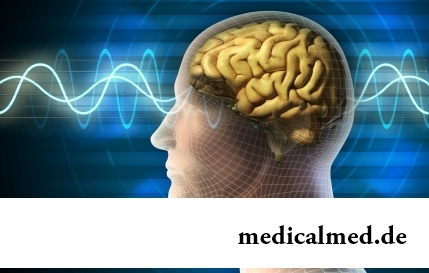
The brain of the person is studied not one hundred years, but the quantity of the riddles connected with this body increases rather, than decreases. Perhaps, numerous delusions concerning a structure and functioning of a brain, many are explained by it from...
Section: Articles about health
What they, women? Beautiful, gentle, passionate and at the same time windy, gusty, and nervous. And what is stranger: have all these qualities of the woman at the same time. But here only the mood their time sharply changes on completely opposite: in the morning they laugh and joke, and in the evening cry or are irritated....
Section: Articles about health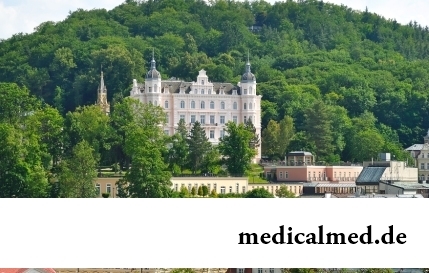
People know that thermal sources have salutary force long ago. Treatment by natural waters is one and...
Section: Articles about health
Since the moment when the child becomes a school student, his sight begins to be exposed to the strengthened loadings which are supplemented with viewing of animated films and long computer games. During this period of life of the child development not completely created bodies to a zra...
Section: Articles about health
Zone hypostases under eyes - very widespread problem giving to people is a lot of inconvenience. Hypodermic fabric in these parts has very loose structure and almost does not contain collagenic fibers. Besides, the skin covering подглазья constantly is exposed to compression and stretching when the person blinks, blinks, etc. These features also create premises for emergence of the so-called bags which are giving to the face a tired and sickly look, and also visually adding increased...
Section: Articles about health
About 10-15 years ago existence of the computer in the apartment of the Russian was considered as a rarity and office rooms were only on перв...
Section: Articles about health
All like to sing. Small children with pleasure are engaged in a vocal, not especially thinking of hit in a melody. Adults most often hesitate, being afraid to show lack of talents in this area, and it is vain: singing is very useful for health....
Section: Articles about health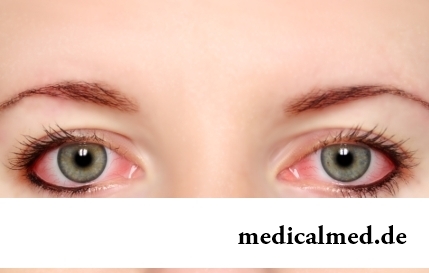
The sclera and mucous membrane of an eye are intensively supplied with blood vessels which problem - to saturate nervous tissues of body with nutrients and oxygen. In a normality vessels are almost not noticeable, however at their expansion (owing to thinning of walls) become visible, painting a sclera in red color. Quite often red eyes - the signal of any trouble in an organism caused as external irritants, allergens, and diseases which need in about...
Section: Articles about health
Frosty air, fresh wind and easy snowball at most of Russians are associated with cheerfulness, health and cheerful entertainments, on to...
Section: Articles about health
(Xerostomia) many people consider feeling of a xerostomia small and easily removable inconvenience. This delusion: the symptom can demonstrate existence of serious diseases. It is worth to remember also that saliva performs important functions...
Section: Articles about health
Quite large number of people adheres to the principles of vegetarian food. But how to be if in a family of vegetarians there are children? Whether it is possible to eat also it the same as to parents, or after all the children's organism is not adapted for the use of exclusively vegetable food? Let's try to understand....
Section: Articles about health
Visit of doctors – business not the most pleasant, and many people do not hurry to undergo necessary planned inspections. Such behavior...
Section: Articles about health
Separate food - the system of meal based on digestion physiology which is carried to improvement methods. According to nutritionists, the separate use of the carbohydrate and proteinaceous products demanding different conditions of assimilation helps to get rid from Bol...
Section: Articles about health
Work of a brain is extremely complex and in many respects is not studied yet. It is confirmed also by the features of thought processes which are shown when the person sleeps. Let's tell about some of them....
Section: Articles about health
The fatigue, sleep debt, disturbances of food, bad mood, vagaries of the weather – all these circumstances badly are reflected in our vn...
Section: Articles about health
Maternal milk is the best food for the newborn. It is the unique natural product containing an optimum set of nutrients, and which is best adapted in order that the baby normally developed and it was protected from harmful fa...
Section: Articles about health
The state of health of the person depends on many factors. One of the most important is the constant, but not exhausting a physical activity. In the presence of various illnesses specialists often advise patients to do swimming which by right takes the leading place by efficiency of improvement, having at the same time a few contraindications. Today we will talk about the main directions of therapeutic impact of swimming on a human body....
Section: Articles about health
The dietology, as well as other sciences, does not stand still. Food stuffs are exposed to comprehensive study, and scientists receive new and...
Section: Articles about health
The phenomenon of improvement of a condition of the patients at administration of drugs who are not containing active agents, so-called effect of placebo is known long ago. At the end of the 18th century the American doctor Perkins began to treat people the "miracle" sticks made of a spl...
Section: Articles about health
Smack in a mouth can arise in the natural way – as a result of lack of morning hygiene or reception of the corresponding food. However in certain cases its existence is a sign of certain pathologies, and allows to reveal an illness at an early stage. Depending on character of aftertaste – acid, salty, bitter, sweet – distinguish also diseases which accompany it....
Section: Articles about health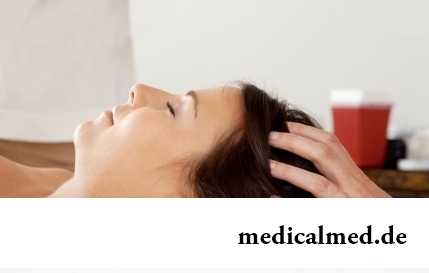
On the head of the person about one million hair follicles, or as they are called still, hair bulbs are located. At the moment he is born...
Section: Articles about health
More than a half of the married couples which faced prostatitis – leave. The new broadcast "Female View of Prostatitis" will help to learn – whether you have or your relatives problems....
Section: Articles about health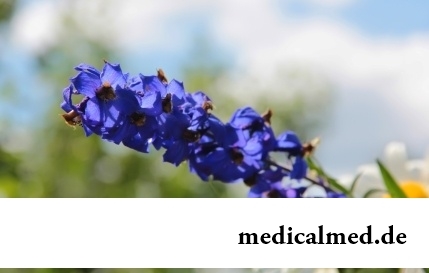
It is impossible to imagine human life in which there would be no plants. Practically in each apartment and any production room there are window plants, millions of people with pleasure are engaged in gardening and truck farming, many citizens spend free time on seasonal dachas. However we very seldom pay attention to those properties of our green pets who can make the neighbourhood with them unpleasant and even unsafe....
Section: Articles about health
Statistically cystitis 25-30% of women up to 40 years have. With age this indicator raises, besides many do not get in to become...
Section: Articles about health
No, probably, the person who would not have cold. Cold, cough, a headache – these symptoms are known to everyone. The peak of catarrhal diseases is the share of fall. SARS already came to schools and kindergartens, flu slowly makes the way to the cities, in a word, з...
Section: Articles about health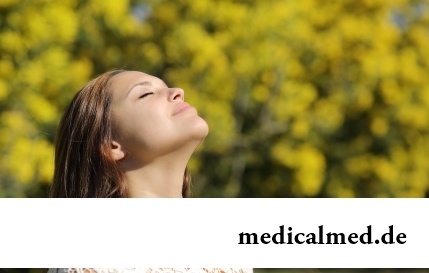
The phenomenon of the panic attack is known long ago, but the reasons of its emergence still are up to the end not found out. It is established that more than 30% of people at least once in life become the victims of very unpleasant phenomenon: without everyones on that the reasons they have a feeling of horror which is followed by a cardiopalmus, a shiver and the fever or feeling of sudden heat increased by sweating, breath constraint, dizziness, nausea....
Section: Articles about health

